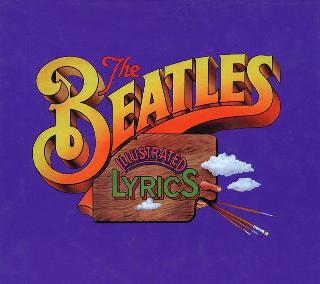Index
Home
Vorige
Getting Better
Composer(s) : Lennon and McCartney
Year : 1967
Chords/Tabs: Getting Better
Notes on "Getting Better" (GB)
KEY C Major
METER 4/4
FORM Intro -> Verse -> Refrain ->
Verse -> Refrain -> Bridge ->
Verse -> Refrain -> Bridge -> Outro
GENERAL POINTS OF INTEREST
Style and Form
- In accord with the compositional advisory re: balancing contrasts, it is
most fitting for abstract
"Lucy..." to be followed by the more
representational "Getting Better" with its simple harmonic structure,
steady beat, and mischievously clear message of hope.
- The musical focus here is on the elaborately detailed arrangement
and the conjuring of a particular Pop/Jazz/Rock aesthetic fusion that
was a McCartney specialty; the latter characterized by long phrases on
pedal points and the stylized instrumentation and recording.
- The whole thing reminds me of
"Got To Get You Into My Life;" not just
for the rave-up, vamping mood and long phrases, but also for the slightly
elusive form. I've chosen to parse it as though the first Refrain
is "slightly lacking" and the other Refrains are followed by a bridge.
You could just as easily parse it with the bridge as an extension of
the Refrains, and labelling the first one as "extremely lacking." The
point is that the usually clear formal dividing lines are blurry here,
and not easily defined definitively.
Melody and Harmony
- The home key of the song is clearly C Major, though it can be
described as having its center of gravity leaning heavily toward
the V chord, based on the large amount of air time given to G.
- Both the tune and the chord choices are "pan diatonic;" a fancy way
of saying that no notes appear anywhere in the song that are not native
to the home key, and that they are all considered consonant amongst
other.
- Paul's improvisational bass line borders on the hyperactive and makes
an accurate transcription of the detailed harmony very difficult. Indeed,
recording of the bassline *this* prominently is reminiscent of
"Paperback Writer"
and might be categorized as one of the musical leitmotifs of the
entire SPLHCB album; at least side 1.
- Though I generally do not shy away from digging down to that level of
detail, in this case I'm going to restrict my analysis to the bigger
picture. I'd rather move on to looking at other songs than obsess on
this one :-) Besides, any time you have a sustained note in the bass part,
it doesn't really matter what chords you play above it, to the extent that
the bass note itself creates a transcending "envelope" of its own that
sustains your attention.
- In this song, for example, while you can spend hours trying to decipher
exactly which chords are played over the G pedal tone of the verse,
I don't think you'd argue against the notion that the entire verse is
"parsed" in your mind as an elaborate V chord.
Arrangement
- Though the final mix is very thick in terms of layered dubs, the
musical texture is curiously spare with the bassline, percussion,
vocals, tamboura, and a repeated chiming of piano and guitar on the
G octave predominating. Yes, there are other instruments
on the backing track, but they are restricted to a low profile.
- They must have had much fun working out the details of this arrangement.
Even if they were making it up as they were going along, the end result
shows great attention to detailed patterning. Let's trace it by
department:
VOCALS
- The Beatles were renowned for their antiphonal and block choral
use of backing vocals which appear throughout their songbook with
regularity if not equal frequency. Here, they go to town:
Intro
Chorus
Verse 1
This one contains the most complicated arrangement. In
the first two lines, you have Paul solo with John/George
antiphonally extending his comments in the same first person
(as opposed to answering him in the third person.) For the
next two lines, the backing vocals answer only with ahh/ohh
phonemes (sounding very much like the chief Blue Meany), and
on the final word, "rules," they echo Paul with "fools" (?)
and throw in a final "wooh!" for good measure. And note how
sharply all the backing parts are syncopated.
Refrain 1
Paul leads, but the backers join him with a parroting of
the word "better" at a rhythmically strange location ("rhymes
with station"), and continue on with a quip that belies the
unmuddied sentiment expressed by the lead.
Verse 2
The delicious complexity of the first verse is traded off
this time for what sounds like Paul accompanying himself in
parallel thirds. On the one hand, I miss the effect of the
first verse, but I guess it would lose more than it would gain
by a repeat. Do think that one over, Dimm.
Refrain 2
Same as before.
Bridge 1
Chorus followed by a moment of staggered three-part
counterpoint.
Verse 3
Same as before.
Refrain 3
Same as before.
Bridge 2
Same as before.
Outro
Same as in the bridges.
PERCUSSION:
Intro
Standard drum kit first enters in the second half.
Verse 1
Cymbal slashes on the syncopated half-beat before FOUR.
Refrain1
Drums playing four-in-the-bar.
Verse 2
Cymbals as in Verse 1, with hand claps on TWO.
Refrain 2
Four-in-the-bar.
Bridge 1
Four-in-the-bar.
Verse 3
Indian "tabla" drums appear, and the hand claps this time
are on FOUR. Late in the section, the cymbals resume their
erstwhile slashing on three-AND; dig the "ka-chunk" effect
created by the cymbals and hand claps appearing one eighth
note apart. Note here, too, the heavy overlay of buzzing
tamboura.
Refrain 3
Four in the bar again, though the Indian drums hang in there.
Bridge 2
Four in the bar again, though the Indian drums hang in there.
Outro
Layering applied in reverse -- eventually only the Indian
drums are left.
CHIMING G OCTAVE:
Intro
Yes.
Verse 1
No.
Refrain 1
Yes.
Verse 2
No.
Refrain 2
Yes.
Bridge 1
Yes.
Verse 3
No.
Refrain 3
Yes.
Bridge 2
Yes.
Outro
Yes.
In other words, this chiming is ubiquitous as long as you're not in
one of the verses.
- By the way ... once it was pointed out to me by the lyrical transcription
found in _Things We Said Today_, I too noticed the muffled "four-five-six"
counting in the intro, but I honestly don't know what to make of it. While
it sounds much more genuine than the fake
"Taxman" count in, it makes no
sense in terms of the number of measures on the recording. Perhaps, this
suggests that there is something at the very beginning of the master tape
that has been edited out of the official mix.
SECTION-BY-SECTION WALKTHROUGH
Intro
- The intro is just four prescient measures long. The first two consist
of just the chiming sonority that will yet characterize the song, and
the final two give us a foretaste of the choral refrain to come.
- The implied harmony of this intro as a IV->I plagal cadence, with
a gratuitous, jazzy 9th applied to the F chord, a result of the G
octave that is sustained for all four measures:
|F |- |C |F |
C: IV I IV
Verse
- The verse is eight measures and breaks into four short phrases of
equal length. As I said up top, we could spend a lot of time transcribing
the exact vertical sonorities one hears in these eight measures, but it's
healthy, sometimes, for the Gestalt-grasping part of your mind to
acknowledge that this entire verse is "experienced" as a V chord.
- Shades of something out of John's
"Rain," the final verse has an extra
measure added between the two phrases; very strange.
Refrain
- Paul's bassline does indeed make it difficult to precisely parse the
chords of this section. This is my take on it, but I'll be the first
to admit that the bassline does NOT necessarily support my root
progression:
------------------------------- 2X ------------------------------
|C |d |e |F (G) |
I ii iii IV (V)
- Suffice it to say that the refrain is eight measures long and consists
of an almost literal repeat of the same four-measure phrase that, no
matter how you precisely parse the chords, is a harmonically simple
phrase that helps establish the home key.
Bridge
- The bridge is more of an extension of the Refrain that it is a section
in its own right. It is ten measures long, and after its opening two
measures of almost Beethoven-like cadence, it proceeds with two repeats
of a four measure phrase that is very similar to the Refrain:
------------------------------ 2X -
|F G F G |F G F G |C |d |
IV V IV V IV V IV V I ii
---------------------------------
|e |F |
iii IV
Outro
- The outro is an unusual "recombinative" reprise of material heard
earlier in both Bridge and Intro:
||chimes only with tabla ....
|F G F G |F G F G |C | | | |
IV V IV V IV V IV V I (implied V?)
- The last chord sounded is I, but the repeat of the G octave into the
fadeout implies an indefinite harmonic ending on V rather than I. This
embiguity is nicely exploited by the intro to the next track; but more
on that next time.
SOME FINAL THOUGHTS
- At risk of appearing to damn with faint praise, this song is by
no means a "bad" one, but on its very own, it surely shines on less
brightly than any of the three songs that precede it on the A side
of SPLHCB.
- This is not necessarily a deficit, and this "shining less brightly" is
not at all a matter of "can't win them all" as much as it is one of
the need, in pacing a continuous album side, of wanting to be able
to relax the tension between acccumulative peaks without allowing the
pot to grow so cold that the overall continuity is lost.
- As such a role player, "Getting Better" admirably fulfills its mission.
Regards,
Alan (awp@world.std.com)
---
"We're trying." 123195#109
---
Copyright (c) 1995 by Alan W. Pollack
All Rights Reserved
This article may be reproduced, retransmitted, redistributed and
otherwise propagated at will, provided that this notice remains
intact and in place.
Ook op Sgt. Pepper's Lonely Hearts Club Band:
(c) 2024 Serge Girard


 (c) Alan Aldrigde, The Beatles Illustrated Lyrics
(c) Alan Aldrigde, The Beatles Illustrated Lyrics